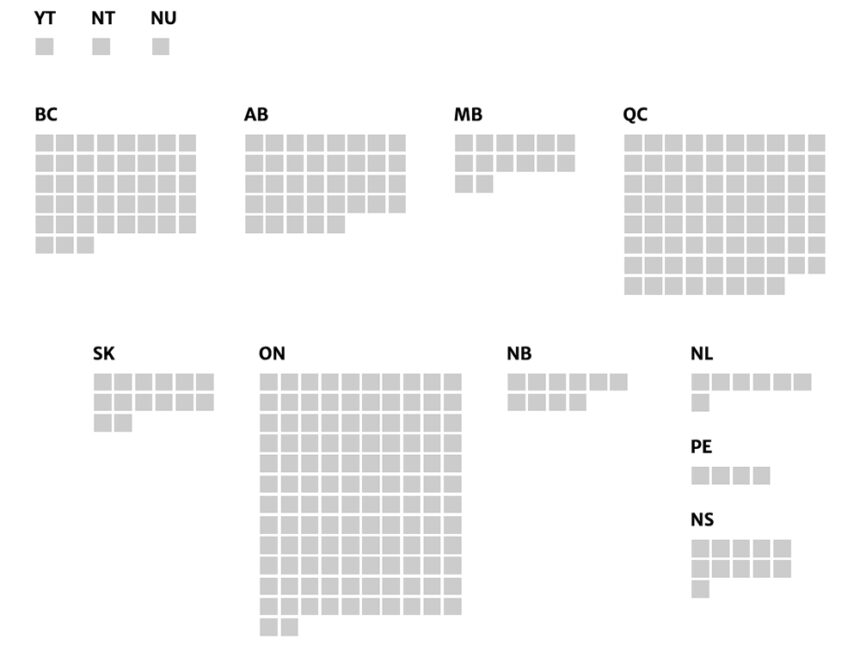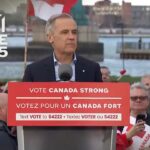2025 Canadian Election Riding Results Live Tracker
The polling stations have closed across Canada’s six time zones, and the results of what analysts are calling “the most consequential election in a generation” are streaming in. As ballot counting continues into the night, Canadians are witnessing significant shifts in the political landscape that could reshape federal governance for years to come.
Atlantic Canada
Early results from Atlantic Canada show surprising gains for the Conservatives in traditionally Liberal strongholds, with New Brunswick’s Saint John-Rothesay and Nova Scotia’s Cape Breton-Canso flipping blue for the first time in over a decade. The NDP is holding steady in Halifax and St. John’s East, where urban progressive voters have maintained their orange loyalty despite aggressive campaigns from both major parties.
“We’re seeing unprecedented voter engagement,” notes Elections Canada spokesperson Maria Hendriks. “Preliminary data suggests turnout may exceed 70% nationally, which would be the highest since 1988.”
Quebec
In Quebec, the Bloc Québécois is defending its territorial gains from 2021, particularly in the regions surrounding Montreal, while the Liberals fight to maintain their urban base. The Conservative strategy of wooing francophone voters outside major centers appears to be yielding results in ridings like Trois-Rivières and Chicoutimi-Le Fjord.
Ontario
Ontario, with its 121 seats, remains the crucial battleground. The Greater Toronto Area’s 905 region is delivering the expected tight races, with several ridings including Mississauga-Lakeshore and Aurora-Oak Ridges-Richmond Hill showing margin-of-error differences between Liberal and Conservative candidates.
The Prairies
The Prairies are maintaining their predominantly blue hue, though urban centers like Winnipeg and Edmonton are showing pockets of orange and red resistance. Regina-Lewvan and Edmonton Strathcona remain bellwether ridings for progressive voters in the region.
British Columbia
British Columbia presents the most diverse electoral map, with four-way races in several Vancouver Island and Lower Mainland ridings. The Green Party is fighting to expand beyond former leader Elizabeth May’s Saanich-Gulf Islands seat, while the NDP aims to solidify its working-class urban base.
Key Issues Influencing Voters
Economic concerns have dominated this election cycle, with inflation, housing affordability, and healthcare funding emerging as voters’ top priorities. Exit polling conducted by Ipsos suggests 63% of voters ranked economic issues as their primary concern, followed by healthcare at 52% and climate change at 41%.
“This election has fundamentally been about economic anxiety,” explains Dr. Samantha Wright, political scientist at the University of Toronto. “Canadians are feeling the squeeze of rising costs, and they’ve voted accordingly. The party that convinced voters it had the most credible plan for addressing affordability likely gained a significant advantage.”
What’s Next?
As results continue to pour in from western provinces, political analysts are carefully watching several dozen swing ridings that could determine whether Canadians wake up to a majority government or another fragile minority parliament requiring cross-party cooperation.
For live updates and comprehensive riding-by-riding results as they become available, visit our CO24 Politics section. Our team of political analysts will continue reporting throughout the night, exploring what these results mean for Canada’s economic trajectory, international standing, and domestic policy priorities.
As we await the final outcome, the question remains: will this election provide the mandate for bold governance that Canada needs, or simply rearrange the parliamentary furniture while leaving fundamental challenges unaddressed?










